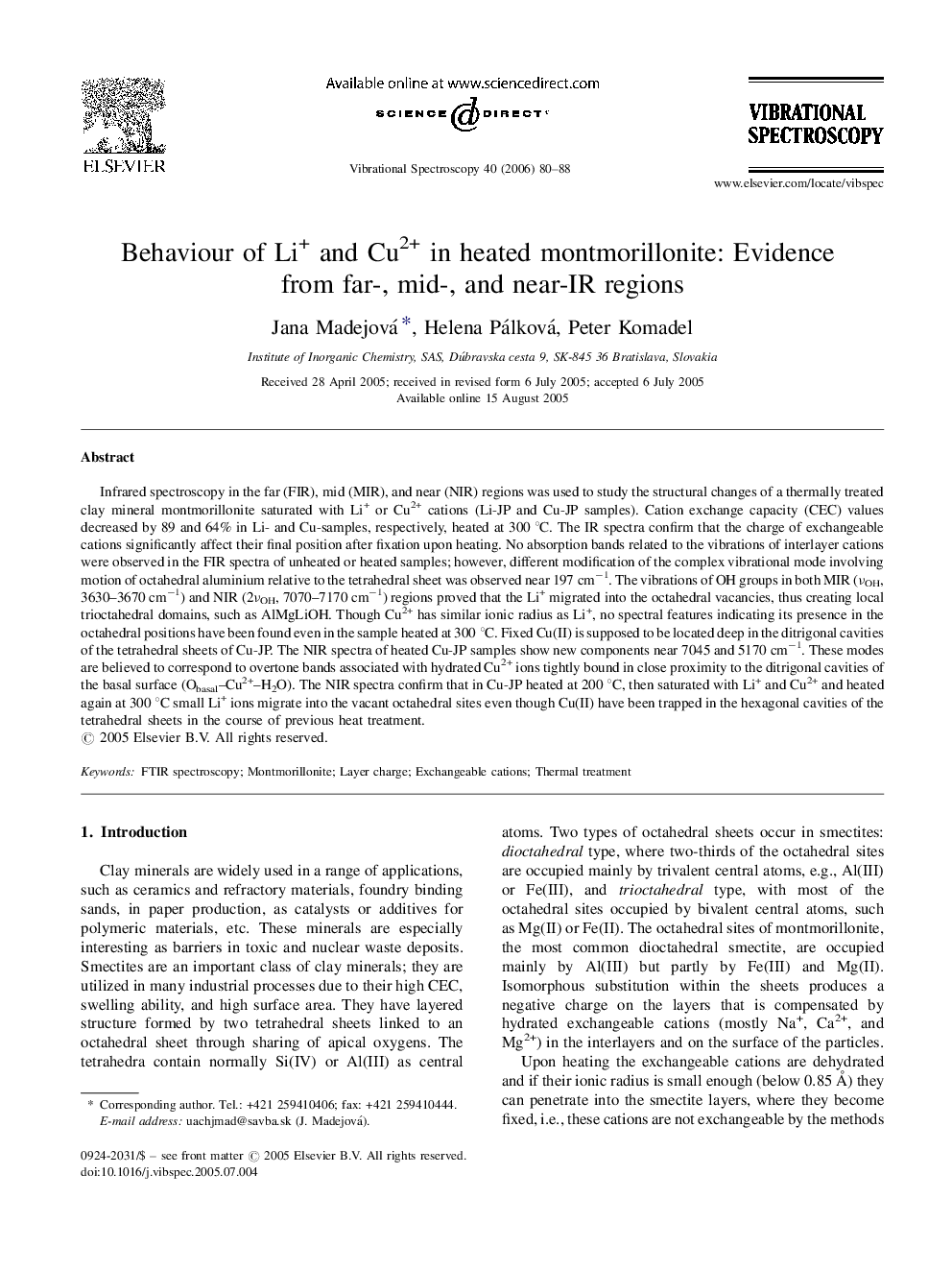| کد مقاله | کد نشریه | سال انتشار | مقاله انگلیسی | نسخه تمام متن |
|---|---|---|---|---|
| 1251208 | 970894 | 2006 | 9 صفحه PDF | دانلود رایگان |

Infrared spectroscopy in the far (FIR), mid (MIR), and near (NIR) regions was used to study the structural changes of a thermally treated clay mineral montmorillonite saturated with Li+ or Cu2+ cations (Li-JP and Cu-JP samples). Cation exchange capacity (CEC) values decreased by 89 and 64% in Li- and Cu-samples, respectively, heated at 300 °C. The IR spectra confirm that the charge of exchangeable cations significantly affect their final position after fixation upon heating. No absorption bands related to the vibrations of interlayer cations were observed in the FIR spectra of unheated or heated samples; however, different modification of the complex vibrational mode involving motion of octahedral aluminium relative to the tetrahedral sheet was observed near 197 cm−1. The vibrations of OH groups in both MIR (νOH, 3630–3670 cm−1) and NIR (2νOH, 7070–7170 cm−1) regions proved that the Li+ migrated into the octahedral vacancies, thus creating local trioctahedral domains, such as AlMgLiOH. Though Cu2+ has similar ionic radius as Li+, no spectral features indicating its presence in the octahedral positions have been found even in the sample heated at 300 °C. Fixed Cu(II) is supposed to be located deep in the ditrigonal cavities of the tetrahedral sheets of Cu-JP. The NIR spectra of heated Cu-JP samples show new components near 7045 and 5170 cm−1. These modes are believed to correspond to overtone bands associated with hydrated Cu2+ ions tightly bound in close proximity to the ditrigonal cavities of the basal surface (ObasalCu2+H2O). The NIR spectra confirm that in Cu-JP heated at 200 °C, then saturated with Li+ and Cu2+ and heated again at 300 °C small Li+ ions migrate into the vacant octahedral sites even though Cu(II) have been trapped in the hexagonal cavities of the tetrahedral sheets in the course of previous heat treatment.
Journal: Vibrational Spectroscopy - Volume 40, Issue 1, 16 January 2006, Pages 80–88